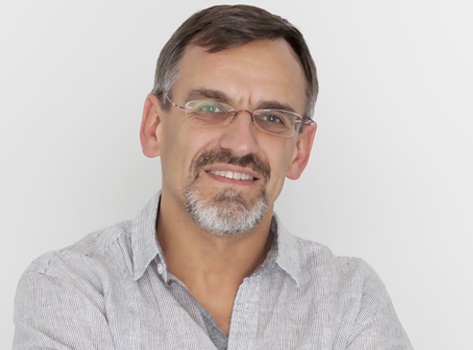Is embryonic development involved in the risk of getting cancer?
Researchers from the Spanish National Cancer Research Centre, Pompeu Fabra University and the Spanish National Centre for Cardiovascular Research consider the importance of genetic diversity in tumour formation and propose a new concept: “tissue clonal health”.
 Cancer is caused by the accumulation of genetic alterations in a cell’s genome. According to recent studies, the number of mutations varies according to age and the tissue affected: tumours caused by environmental factors (such as melanoma, caused by the exposure to UV rays, or lung cancer, due to smoking tobacco) show the highest mutation rate among cancers in adults. By contrast, paediatric tumours are associated with lower rates of mutation.
Cancer is caused by the accumulation of genetic alterations in a cell’s genome. According to recent studies, the number of mutations varies according to age and the tissue affected: tumours caused by environmental factors (such as melanoma, caused by the exposure to UV rays, or lung cancer, due to smoking tobacco) show the highest mutation rate among cancers in adults. By contrast, paediatric tumours are associated with lower rates of mutation.
The formation of a tumour implies the presence of two or more genetically different cell populations within a tissue: the diseased population, from which the tumour arises, and the healthy population. When an organism coming from a single or fertilized cell carries more than one genetically diverse cell population. We talk about genetic mosaicism Thumours thus constitute an example of mosaicism.
Until recently, scientists believed that mutations leading to tumours among adults occurred during adult life. Although this is likely to be true for many mutations, there is growing evidence that the genetic profile of a cancer is established over many years before diagnosis. Unfortunately, our understanding of the genetic make‑up of the earliest preneoplastic lesions is limited, among other reasons, by the fact that studies have largely dismissed histologically normal cells that can carry visually imperceptible genetic changes.
Francisco X. Real, full professor of the Department of Experimental and Health Sciences (DCEXS) at UPF and leader of the research group on Epithelial Carcinogenesis of the Spanish National Cancer Research Centre (CNIO), Luis C. Fernández, researcher at the CNIO, and Miguel Torres, researcher at the Spanish National Centre for Cardiovascular Research (CNIC),reflect as to the role played by genetic mosaicism in the development of cancer in a review article published in Nature Reviews Cancer.
We are all mosaics at birth
Although the genome of an individual is considered to be largely stable, there is theoretical and experimental evidence that genetic mosaicism is the rule rather than the exception. It is very difficult for cells to reproduce themselves 100% reliably when transmitting genetic material to daughter cells, not to mention the environmental factors attributed to genetic changes. Scientists have calculated that three new mutations are generated in the daughters of any dividing human cell, and this rate is higher if we take into account other sources of somatic mutations. Furthermore, it has been estimated that each of the approximately 40 trillion cells of the human body would accumulate 100–1,000 de novo mutations during the first 15 years of life.
Taking into account that from zygote formation to birth, an average cell will have undergone at least 40 divisions, genetic heterogeneity is inevitable: we do all carry a substantial burden of mosaic genetic variations at birth. In addition, during our lives, tissues continue to proliferate and divide with the additional burden of a progressive increase in the mutational load as cells undergo rounds of division during ageing and as organisms are exposed to environmental factors.
This genetic heterogeneity leads to complex interactions between cells, including collaborative processes, competition, death and cell suicide - in an almost 'sociological' behaviour. Thus, mosaicism is not always harmful for the organism. It is the case of the immune system, where cell hypermutation provides an example of the regulated use of somatic mosaicism for an essential function in higher vertebrates. Genetic diversity can therefore be related to what the authors call "the clonal health" of tissues, which could promote adaptation to the environment. The problem is that this adaptation can also contribute to the progression and aggressiveness of certain tumours.
Does the embryonic mosaicism contribute to cancer development?
Until now, few studies have attempted to link embryonic mosaicism with the development of cancer in adults. Studies conducted by the group of Paco Real in collaboration with other researchers from the Barcelona Biomedical Research Park (Agustí Toll, of the Dermatology Service of the Hospital del Mar Medical Research Institute, and Luis A. Pérez-Jurado, leader of the DECXS Genetics Unit) have contributed to demonstrating conclusively that some genetic alterations in adult tumours occurred during the embryonic period.
The study of the heterogeneity of cancer genomes is recognized as one of the major challenges in understanding tumour development, progression and resistance to therapy. The authors posit that the study of normal cell heterogeneity and its dynamics will also be key in understanding clonal health as part of tissue homeostasis and in the prediction of neoplastic conditions.
Work of reference: Luis C. Fernández, Miguel Torres, Francisco X. Real. Somatic mosaicism: on the road to cancer. Nature Reviews Cancer, December 2015. doi:10.1038/nrc.2015.1
